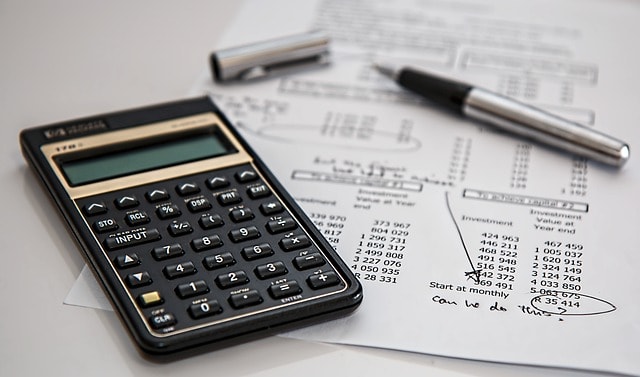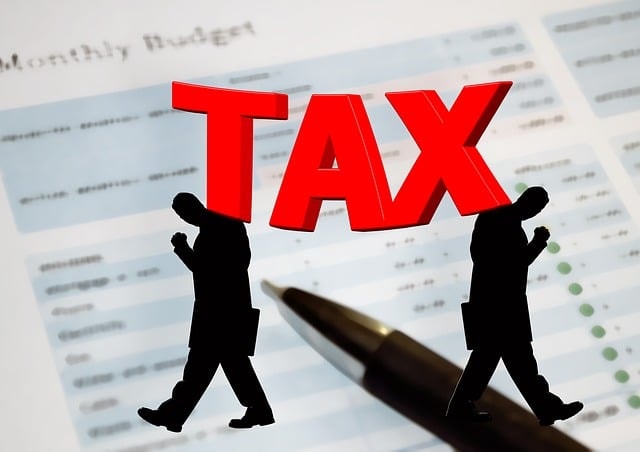- Attorney Appointment (916) 704-3009
California’s Proposition 13: Guide to Property Taxes Props 13

Introduction
As a property tax consultant with over 20 years of experience in California, I’ve seen firsthand how Proposition 13 has shaped the state’s property tax landscape. Passed in 1978, this landmark measure has profoundly impacted homeowners, businesses, and local governments.
In this guide, I’ll break down the critical aspects of Prop 13, its effects, and what it means for property owners in California today.
The Basics of Proposition 13

Prop 13 applies to all taxable property, including residential and commercial properties.
Things to Know:
- Prop 13 limits property tax rates to 1% of the property’s assessed value
- It caps annual increases in assessed value, an essential aspect of property valuation, to 2% or the rate of inflation, whichever is lower.
- Properties are reassessed at market value only when sold or new construction occurs.
- Prop 13 applies to both residential and commercial properties
Proposition 13 was a response to rapidly rising property taxes in the 1970s. Many homeowners, especially those on fixed incomes, struggled to keep up with tax bills that seemed to increase unpredictably each year. The measure aimed to provide stability and predictability in property taxation.
In my experience, Prop 13’s most significant impact is the peace of mind it offers long-term property owners. I’ve worked with countless clients who have been able to stay in their homes for decades, thanks to the predictable nature of their property tax bills under Prop 13.
Related Terms: factored base year value, income taxes, real property, capital gains, just a few examples, tax money, only a partial change, sales tax, property valuation, local taxes, taxable property, California proposition, principal residence, national average, one percent, school districts
How Prop 13 Works: Property Tax Caps

- Prop 13 limits the tax rate for real estate to 1% of the assessed value at the time of purchase.
Real property transactions, including sales and new construction, trigger reassessment under Prop 13.
Things to Know:
- The base year value is established when you purchase a property or complete new construction
- Your property tax bill is calculated by multiplying the assessed value by the tax rate (usually 1%) plus any special assessments or bonds.
- The assessed value, also known as the factored base year value, can increase by up to 2% annually, even if the market value increases more.
- If the market value drops below the assessed value, you can request a temporary reduction in your assessment.
Let’s look at an example: Suppose you bought a home in 2010 for $500,000. This becomes your base year value. In 2011, even if the market value increased to $550,000, your assessed value would only increase by 2% to $510,000. Your property tax bill would be approximately $5,100 (1% of $510,000) plus any additional local assessments.
Over the years, I’ve helped many clients understand their property tax bills and take advantage of the protections offered by Prop 13. It’s crucial to keep track of your base year value and ensure that annual increases don’t exceed the 2% cap.
Impact on Local Government and Services

- Local government revenue has been significantly impacted by Prop 13.
Local taxes, including special assessments and bonds, have become more critical for funding services due to the limitations imposed by Prop 13.
- Public services such as schools, libraries, and emergency services have faced budget constraints.
Things to Know:
- Prop 13 significantly reduced local government revenues
- It shifted more financial responsibility for schools and some services to the state
- Local governments have increasingly relied on special taxes and bonds to fund services
- Some argue that Prop 13 has led to inequities in school funding across different areas, affecting various school districts differently.
One of the most controversial aspects of Prop 13 is its impact on local government funding. In my work with various municipalities, I’ve seen how cities and counties have had to get creative in funding essential services. This often involves special taxes or bonds requiring voter approval, which can be challenging.
For example, I worked with a school district that needed to upgrade its facilities but couldn’t rely solely on property tax revenue. We helped them develop a bond measure ultimately approved by voters, providing the necessary funds while working within the constraints of Prop 13.
Commercial and Industrial Properties and Prop 13
Things to Know:
- Commercial properties benefit from the same protections as residential properties under Prop 13
- Some argue this has led to inequities, with long-held commercial properties paying much less than recently purchased ones.
- There have been efforts to modify Prop 13 for commercial properties, including changes to how ownership change triggers reassessment.
The application of Prop 13 to commercial properties has been a topic of debate for years. I’ve worked with businesses that have significantly benefited from the predictable tax structure, allowing them to plan and invest for the long term.
On the other hand, I’ve also seen new businesses struggle with higher property tax burdens compared to their more established competitors.
Recent Changes and Propositions
Things to Know:
- Proposition 19, passed in 2020, made significant changes to property tax rules for inherited properties and older people
- It allows homeowners over 55, severely disabled, or victims of natural disasters to transfer their tax assessments up to three times.
- It also limits the tax benefits for inherited properties not used as a principal residence.
Proposition 19 represents one of the most significant changes to property tax laws since the original Prop 13.
In my practice, I’ve been helping many clients navigate these new rules, particularly older people looking to downsize or move closer to family while maintaining favorable property tax assessments.
For example, I recently assisted a couple in their 70s who wanted to move from their large family home in Northern California to a smaller property near their children in Southern California.
Thanks to Prop 19, they could transfer their lower tax assessment to their new home, saving thousands of dollars annually in property taxes.
Challenges and Controversies
Things to Know:
- Critics argue that Prop 13 has created inequities, with newer homeowners often paying significantly more than their neighbors for similar properties
- Some believe it has contributed to California’s housing crisis by discouraging people from moving
- Defenders argue it has protected homeowners, particularly older people, from being priced out of their homes due to rising property taxes, a stance supported by the California state board.
In my years of practice, I’ve seen both the benefits and challenges of Prop 13. Thanks to stable property taxes, long-term homeowners can stay in their homes, especially retirees on fixed incomes.
However, I’ve also worked with young families struggling to buy their first home in a market where many older homeowners are reluctant to sell due to the tax implications.
Related Terms: Howard Jarvis Taxpayers Association, authentic property assessments, commercial real estate, commercial property, established base year values, factored base year value, factored base year values, state legislature, California state board, tax revolt, property values, assessed values
The Future of Property Taxes in California
Things to Know:
- There are ongoing discussions about potential reforms to Prop 13
- Future changes could include different treatments for commercial properties or further adjustments to inheritance rules
- Any significant changes to Prop 13 would require voter approval due to its status as a constitutional amendment
As a property tax consultant, I constantly examine potential changes to California’s laws. While Prop 13 has been a cornerstone of the state’s tax system for over four decades, the ongoing debates suggest we may see further adjustments.
Conclusion
Proposition 13 has shaped California’s property tax landscape for over 40 years. Its impacts are far-reaching, affecting homeowners, businesses, and local governments. While it has provided stability and predictability for many property owners, it has also created challenges and controversies that continue to be debated today.
Understanding Prop 13 is crucial for property owners or potential buyers in California. It can help them make informed decisions about real estate investments and long-term financial planning.
Always consult a qualified tax professional or legal expert for your situation, as property tax laws can be complex and subject to change.
Frequently Asked Questions
- Q: How often is my property reassessed under Prop 13? A: Under Prop 13, your property is only reassessed to market value when it changes ownership or undergoes new construction. Otherwise, the assessed value can only increase by up to 2% annually.
- Q: Can I transfer my low property tax base to a new home? A: Yes, under certain conditions. Proposition 19, passed in 2020, allows homeowners over 55, severely disabled, or victims of natural disasters to transfer their tax assessments up to three times to a new primary residence anywhere in California.
- Q: How does Prop 13 affect inherited properties? A: Proposition 19 changed the rules for inherited properties. As of 2021, only inherited properties used as primary residences receive the full tax benefit. There’s also a cap on the tax benefit for high-value properties.
- Q: Does Prop 13 apply to all taxes on my property tax bill? A: Prop 13 applies to the base 1% tax rate. However, your property tax bill may include additional local special taxes, assessments, or bonds not subject to Prop 13 limitations.
- Q: Can my property taxes decrease if my home’s value decreases? A: Yes, you can request a temporary reduction in your assessed value if the market value of your property falls below its Prop 13 adjusted base year value. This is known as a Proposition 8 reduction.
Remember, while this guide provides a comprehensive overview of Proposition 13, property tax laws can be complex, and situations can vary. Always consult with a qualified tax professional for advice on your specific circumstances.
Significant Case Laws Related to Proposition 13
Understanding the legal interpretations of Proposition 13 is crucial for property owners and tax professionals. As a property tax consultant, I’ve often referred to these landmark cases when advising clients or contesting assessments. Here are five key cases that have shaped the application of Prop 13:
1. Amador Valley Joint Union High School District v. State Board of Equalization (1978)
Key Points:
- This was the first major challenge to Proposition 13’s constitutionality.
- The California Supreme Court upheld Prop 13, ruling that it did not violate the state or federal constitutions.
- The court determined that Prop 13 was a constitutional amendment, not a revision, and therefore, could be enacted through the initiative process.
Impact: This case essentially validated Proposition 13, allowing its implementation and setting the stage for decades of property tax policy in California.
2. Nordlinger v. Hahn (1992)
Key Points:
- This U.S. Supreme Court case challenged Prop 13, arguing that it violated the Equal Protection Clause of the 14th Amendment.
- The plaintiff argued that the acquisition-value assessment system created by Prop 13 was unconstitutional because it led to vastly different tax burdens for similar properties.
- The Supreme Court upheld Prop 13, ruling that the acquisition-value system was rationally related to legitimate state interests.
Impact: This decision reinforced the constitutionality of Prop 13 at the federal level and affirmed the legality of differing tax burdens based on the acquisition date.
3. Macy’s Department Stores v. County of Santa Clara (1985)
Key Points:
- This case dealt with how new construction should be assessed under Prop 13.
- The California Court of Appeal ruled that only the value of the new construction should be added to the existing Prop 13 base year value rather than reassessing the entire property at the current market value.
Impact: This decision has been crucial in determining how property improvements are assessed, often resulting in significant tax savings for property owners who renovate or expand existing structures.
4. Zangerle v. Court of Appeals (1984)
Key Points:
- This case addressed what constitutes a change in ownership under Prop 13.
- The California Supreme Court ruled that a change in ownership occurs when a transfer results in a change in the right to possession of a property, accompanied by a transfer of the beneficial use of the property.
Impact: This case has been instrumental in defining what triggers a reassessment under Prop 13, affecting various types of property transfers and estate planning strategies.
5. City and County of San Francisco v. County of San Mateo (1995)
Key Points:
- This case dealt with applying Prop 13 to government-owned properties leased to private entities.
- The California Court of Appeal ruled that when a government entity acquires property, it establishes a new base year value, even if it is leased to a private party.
Impact: This decision has had significant implications for public-private partnerships and the taxation of government-owned properties used for private purposes.
Practical Implications
In my practice, these cases have provided crucial guidance in various situations:
- When advising clients on property improvements, I often reference Macy’s case to explain how new construction will be assessed.
- The Zangerle case has been invaluable in estate planning discussions, helping clients understand how different property transfer strategies might trigger a reassessment.
- For clients involved in public-private partnerships, the San Francisco v. San Mateo case has been key in understanding the tax implications of leasing government-owned property.
Understanding these legal precedents is essential for navigating California’s complex property tax system effectively. However, property tax laws can be intricate, and new court decisions can further refine how Prop 13 is interpreted and applied. Always consult with a qualified legal professional for advice on specific situations.
Related Terms: property tax rate, property owner, fair market value, raise property taxes, local property taxes, residential property taxes, California voters, commercial and industrial properties, property tax system, ownership occurs, California constitution, property tax caps, current fair market value













